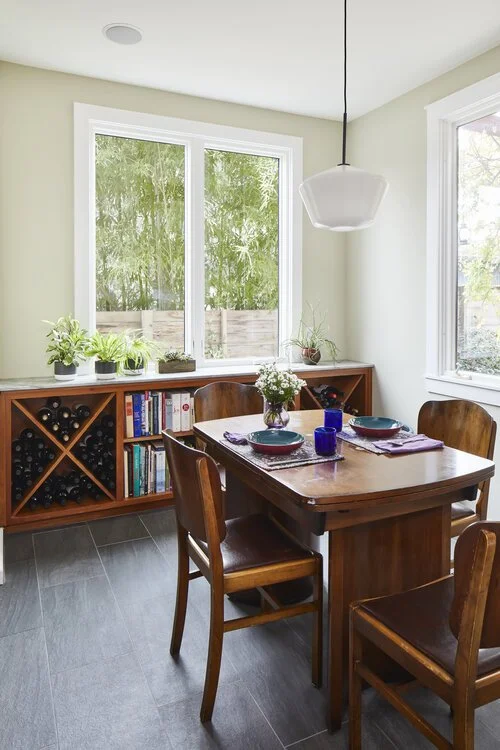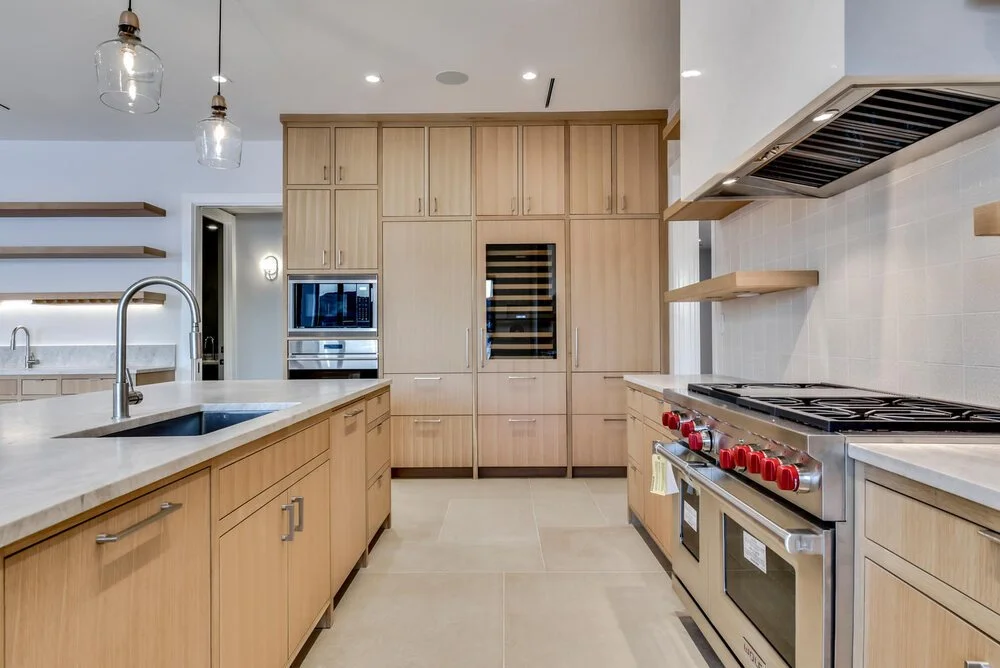How to Design a Wine Cellar
Our Austin Architects Explain How to Design a Wine Cellar for Your Home
If you like to unwind at the end of the day with a glass of wine or love the thrill of adding a new bottle to your collection, it might be time to consider adding a wine cellar to your home. Big or small, wine cellars provide additional storage and a luxury feature that adds value to your home and lifestyle. Our Austin architects explain how to design a wine cellar and review the top considerations to keep in mind.
How Big Should Your Wine Cellar Be?
So, how big should a wine cellar really be? It all depends on the size of your wine collection, how you want to use the space, and the available square footage. A functional wine cellar could be as small as a dedicated row of storage in your kitchen or as large as an entire tasting room where you can entertain guests over your favorite bottle.
Where are the Best Places to Put a Wine Cellar?
Wine is best stored in cool, humid, and dark rooms — just picture the age-old stone cellars of France! Basements are a great spot for wine storage in the home. However, we don’t have many houses with basement levels here in Texas. But there’s no need to worry because there are other great locations on the main level. Interior rooms close to entertaining areas work well for storage and easy accessibility. Consider adding a wine cellar to a butler’s pantry behind the kitchen, a wet bar off the living room, or a bonus entertaining space.
Passive vs. Active Wine Cellars
There are two main wine storage options to consider when designing a wine cellar: passive and active.
Passive Wine Storage
Passive wine storage refers to non-refrigerated storage at room temperature, or ideally a little cooler in the 68 to 72-degree range. Passive cellars are suitable options for less serious collectors storing everyday drinking wines.
Active Wine Storage
Active wine storage refers to refrigerated storage, carefully maintaining ideal levels between 55 to 65 degrees and 60 to 80 percent humidity. This option is better suited for avid collectors who age wine for years or those who enjoy a chilled bottle. Active wine storage can be achieved with a self-contained wine fridge unit or a specialty split or ducted cooling system for the room.
Wine Storage Considerations
One of the most critical factors in designing your wine cellar is storage. Here are some top storage considerations to review when creating a plan with your architect.
Collection Size
Determine the size of your existing wine collection and plan for room to grow. You want to ensure enough storage to house all your bottles properly.
Display Preferences
There are many different storage options to choose from — more on those later on. Decide if you value display or consolidation and want bottles showcased or hidden away.
Best Practices
Remember that wine bottles should be stored on their sides so the liquid can touch the cork and preserve it. Additionally, not all bottles are the same size. Take time to measure the diameters of your prized bottles to ensure a proper fit.
Wine Fridges
Wine fridges are a great storage option for new and seasoned collectors. Under-cabinet fridges are perfect for small collection storage, while full-height fridges can hold up to 100 bottles. These appliances make great additions to kitchens, butler’s pantries, and wine rooms to always have chilled wine on hand.
Additional Storage
While wine is the priority in your wine cellar, consider additional storage needs, including cabinets for glassware or a standard under-cabinet fridge for pairing snacks. You could also turn the cellar into a home bar with the addition of a bar top and liquor bottle storage.
Types of Wine Racks
Your architect can design custom wine rack storage during the cabinet drawings design phase based on your storage needs and display preferences. Here are some of the most popular options.
Wine Cubes
Wine cubes are the classic box storage with an “X” in the middle. This design offers flexibility for storing different-sized bottles together.
Lattice Wine Racks
Lattice wine racks hold each bottle individually in a double lattice pattern, perfectly tilting the bottle for wine-to-cork storage. The lattice must be carefully measured if holding bottles larger than the standard size.
Wine Columns
Wine columns are a compact storage option featuring rows of wood columns with peg shelves to hold bottles in a uniform grid pattern. Again, bottle size must be taken into consideration when designing.
Floating Wine Racks
Floating wine racks offer a more contemporary, minimalist approach. These racks feature boards with a series of holes that support bottles by the neck, creating a floating effect.
Wine Presentation Shelves
Wine presentation shelves hold bottles at a slight angle to showcase the label. These shelves are best suited to highlight a few prized bottles.
Cable Wine Systems
Cable wine systems suspend from the floor to the ceiling with glass, wire, or peg shelf slots for storage. These systems provide a contemporary look that works nicely inside glass wine displays.
Mounted Wine Ledges
Mounted wine ledges are shelves that store the wine bottle on its side with the label out for easy identification and access.
Wine Drawers
Wine drawer systems slide out for easy wine access and can be easily tucked out of view. They’re an excellent option for private collections.
Wine Cellar Design Considerations
Here are a few other essential design elements to consider when creating a plan for your wine cellar.
Millwork
Whether your wine cellar takes up an entire room of your home or just one area of your kitchen, the process will involve a good deal of millwork design. Ensure the wood tones and cabinet styles coordinate with the rest of your home’s finishes for a cohesive look.
Lighting
Spotlights and built-in cabinet lighting are great options for showcasing your wine collection and providing easy accessibility. If creating a wine room, consider adding accent pendant lights over tasting tables and bar tops to set the mood.
Flooring
Enhance the thermal properties of your wine cellar with flooring options that stay cool, such as natural stone or cement tile. Remember to seal these materials after installation to protect them from any accidental wine spills.
Wind Down With a Home Wine Cellar
That’s how you design a wine cellar perfect for storing or unwinding with your favorite bottle. Remember, there are many considerations to plan around when it comes to wine cellar design. Ensure you get your dream space with the help of an architect and design team. We’d be happy to bring your home wine cellar to life!




